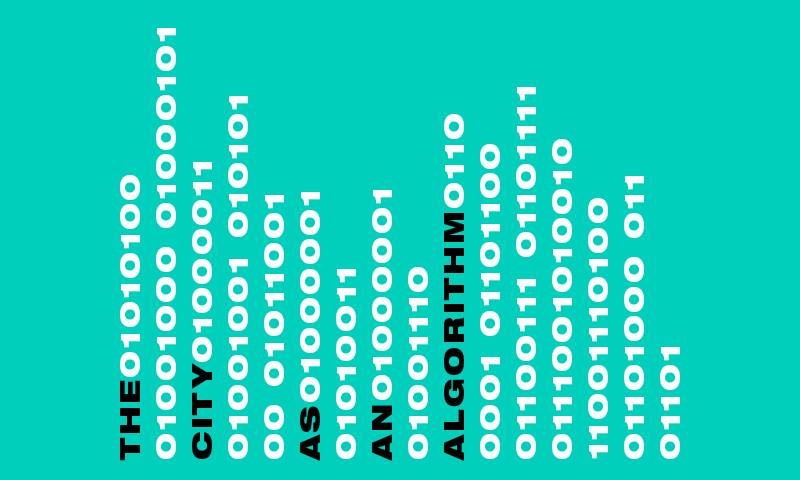What can the cities of tomorrow learn from the evolution of Venice with its millennia-long reputation for innovation and enduring stability?

Dr Sophia Psarra
The urban environments we live in today are undergoing radical transformations comparable in scale and magnitude with the changes brought about by the industrial revolution. Leveraging new materials, infrastructures and means of production, architects and planners in the 19th and 20th centuries created both the modern industrial city and social reform. In the 21st century, some of the old disciplines, along with new specialisms and a host of digital businesses, have stepped in, re-conceptualising the city of the past as a ‘smart city’, a new urban ideology of pervasive digital transformation.
As the emphasis shifts from the hard infrastructures of road networks, water and sanitation systems to digital technology, cities of tomorrow will become the domain of algorithms, capturing, analysing and ultimately influencing human behaviour. The balance will be transferred in favour of those controlling the digital machines that turn the enormous amount of data now at our disposal into real-time knowledge, optimising functions and built forms. For architects and urban professionals, the key to improving our everyday urban realities is to mediate between the digital city and its physical counterpart, whose socio-economic processes have been inscribed from its early origins on its three-dimensional form.
If urban intelligence is the ability to retrieve information and apply it as knowledge, there is a rich history of cities of extraordinary intelligence, creativity and foresight. Despite the long-term uncertainty about its survival, the pre-industrial city of Venice, for example, continues to inspire architects and urban designers, containing lessons for other cities as a resilient urban environment.
Venice’s reputation for innovation and enduring stability for over a thousand years and its contribution to architecture and cities – two of the leading expressions of culture in modern society – invite investigation, begging the question: what lessons does an evolved city like Venice offer for the cities of tomorrow? If future cities will automate their intelligence through algorithms, where was Venice’s intelligence stored and how did it structure human action?
To understand Venice – and cities in general – we need to understand its process of emergence through the collective actions of people. The origins of Venice were in the archipelago of island communities, which joined together to form the city as a whole. Analysis of the urban networks of Venice shows that it was the product of two interlocking systems – the canal and the street network. The canal network served large-scale communication, essential for economic activity, while the street network was the domain of neighbourhood relations and residential culture. The two networks intersected in the centres of the island communities, the campi (squares) of Venice comprising churches, palaces, wells for water collection, guilds, and scuole (charitable institutions). They thus facilitated interlocking relations between Venice’s social networks, that is, a governing oligarchy of merchants-patricians, whose palace-warehouses were dispersed throughout the city, and the rest of the citizens. This intertwining of spatial and social networks interwove public and private interests, commercial and cultural pursuits, forging strong bonds of solidarity between different members of the community and mitigating conflict.
Over time, an urban ideology emerged in synergy with the urban morphology, manifested in popular beliefs, community actions and ritual; an expression of the physical and social compact between the city and its citizens. Stored in the network structure of physical sites, events, behaviours and the minds of its inhabitants, Venice’s intelligence was spatialised, balancing socio-economic innovation through the city’s canals with the more stable operations of community life in the campi and the belief systems of people.
At this point in the 21st century, addressing the seemingly paradoxical challenge of maintaining stability while enabling change through algorithms, Venice at its height may have some fundamental insights to impart. It too had its algorithm: interlocking networks and a menu of urban elements repeated with infinite variation in each campo, almost a precursor to the digital customisation of the present. But as Venice’s example demonstrates, successful cities are much more than this. They intensively spatialise webs of social relationships, aligning public interests with the private pursuits of citizens and the social welfare of people.
In developing our algorithms, are we just replicating Venice’s analogue approach with a digital substitute, or are the needs of citizens different nowadays? If they are, what can our current exploration of digitally-based solutions be expected to deliver? What is it that distinguishes urbanism – the spatial and civic culture of cities – from the mere assembly of social behaviours, and can our algorithms capture it? Furthermore, in an era of the ‘wisdom of crowds’, will we be able to plug in an artificial intelligence loop, to compensate for the collective urban intelligence of the Venetians?
Dr Sophia Psarra is Professor at The Bartlett School of Architecture. Her most recent book is The Venice Variations: Tracing the Architectural Imagination.
 Close
Close

